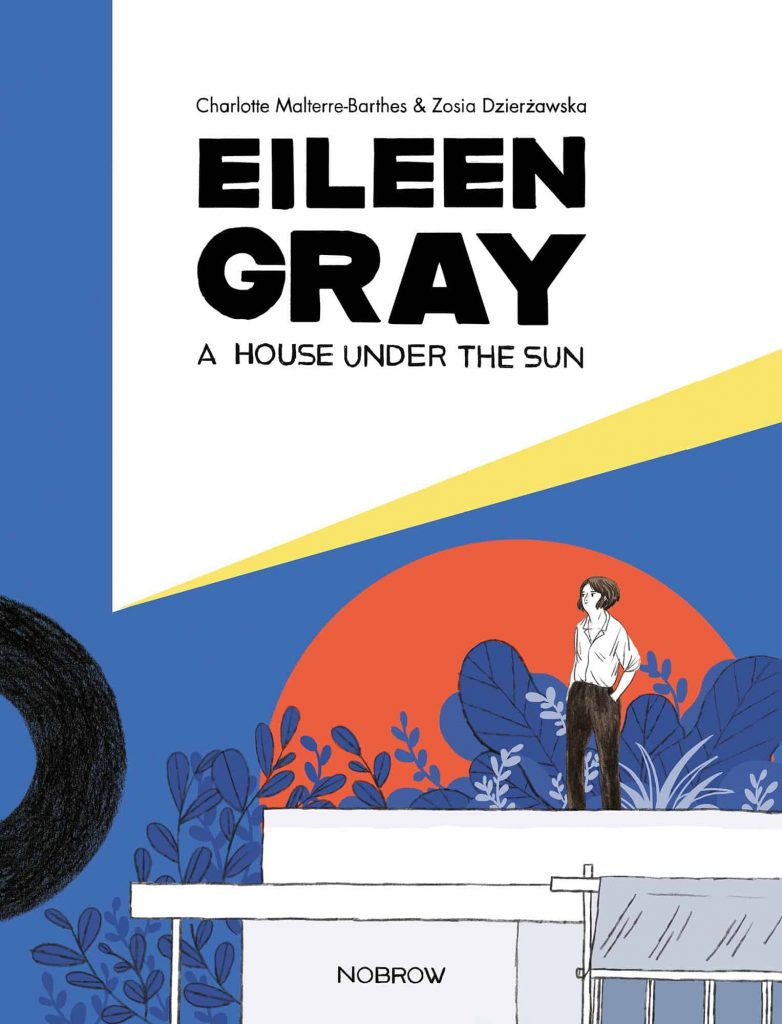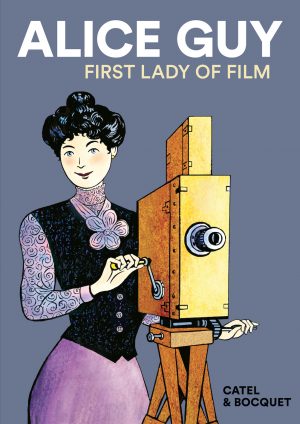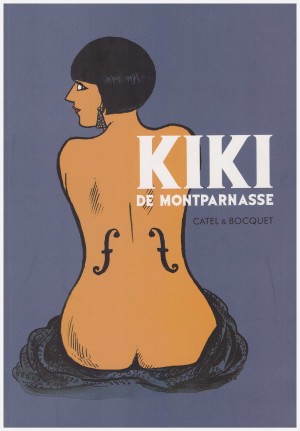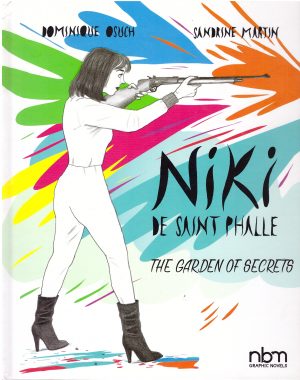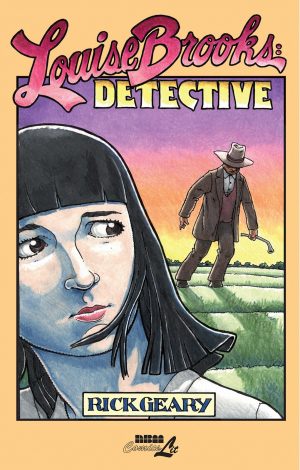Review by Graham Johnstone
Eileen Gray was an early 20th Century designer and architect most famous for the intriguingly named E-1027 house, glimpsed on the cover. A liberated woman and bisexual, she mixed with icons of modernism, like writer Gertrude Stein, and architect Le Corbusier – a fascinating subject then for a graphic biography.
The book is steeped in stylish modernism. Behind a cover evoking the inter-war Art Deco style, it’s bookended by Corbusier, in powerful scenes best not spoiled here. Thereafter, it jumps back and forth between decades in the manner of the period’s modernist literature, notably Marcel Proust’s memory triggered time-shifts. However, none of that need deter readers – this book is as accessible as it is artful and educational.
Eileen Gray is the graphic novel debut of both Charlotte Malterre-Barthes and Zosia Dzierżawska. Malterre-Barthes is an architect, scholar, and campaigner for gender equality in her field, which explains her motivation and authority to tell this story. Dzierżawska is an award-winning illustrator, so it’s similarly no surprise her art is impressive. However the credit should be split, as the duo are equally convincing telling the human story. Captions are limited to date and place, with ideas instead explored through dramatic scenes and dialogue. It occasionally feels too written, but in contrast to the naked male egotism of Corbusier (seen in these pages), the architect author is a discreet presence.
Early scenes encapsulate Gray’s childhood in Ireland, and artistic development in England, leaving most of the book to explore her mature years in France. This highlights her circle of female friends/lovers, and her long-term relationship with architect/critic Jean Badovici. He inspired her to pursue architecture, and to design a house for them in the south of France. They called it E-1027, ‘E’ representing Eileen, and the numbers based on their initials. The house is now considered a prime example of the ‘international modernist’ style. It’s her most famous work, and the natural core of this book. Unlike many graphic biographies, Eileen Gray never feels squashed into a page count.
Artist Zosia Dzierżawska demonstrates her illustration skills on numerous splash panels and spreads. They immerse us in the place, without slowing the pace. Her experience in children’s illustration is well displayed in appealing character designs and expressive figures, while relative inexperience at comics proves no disadvantage, and maybe even adds to her bold layouts, and stunning montage pages. At times she evokes period artists, like George Grosz. However, the latter’s strident satire, is replaced by a more a gentle hedonism, and the carnal content all elegantly implied (featured image).
Dzierżawska’s greatest achievement, though, is the very architectural quality of her art. She captures the famous house in its hillside, waterfront context, using the maturity of surrounding vegetation to elegantly signal time shifts. Her drawing is loose and expressive, on first look closer to painting than architectural drawing, but she avoids illusionistic perspective in favour of blueprint-style ‘front elevations’. An aerial view of the house is a sketchy version of the 45-degree ‘isometric’ view favoured in technical drawings, and the comics of Chris Ware. Like Ware, she captures not just the building, but the inhabitants in context, here capturing their eventual loneliness. There are numerous, loving shots of architectural details, and few comics demonstrate such a powerful sense of place. It’s impressive, vivid, stylish work. More graphic novels would be very welcome.
Eileen Gray tells an important story of an under-appreciated female pioneer. It illuminates her architectural ideas, and liberated life, with equal sensitivity.
Endpapers of Gray’s furniture designs, capsule bios of characters, and more details of the E-House, add to a satisfying, well-presented book.
